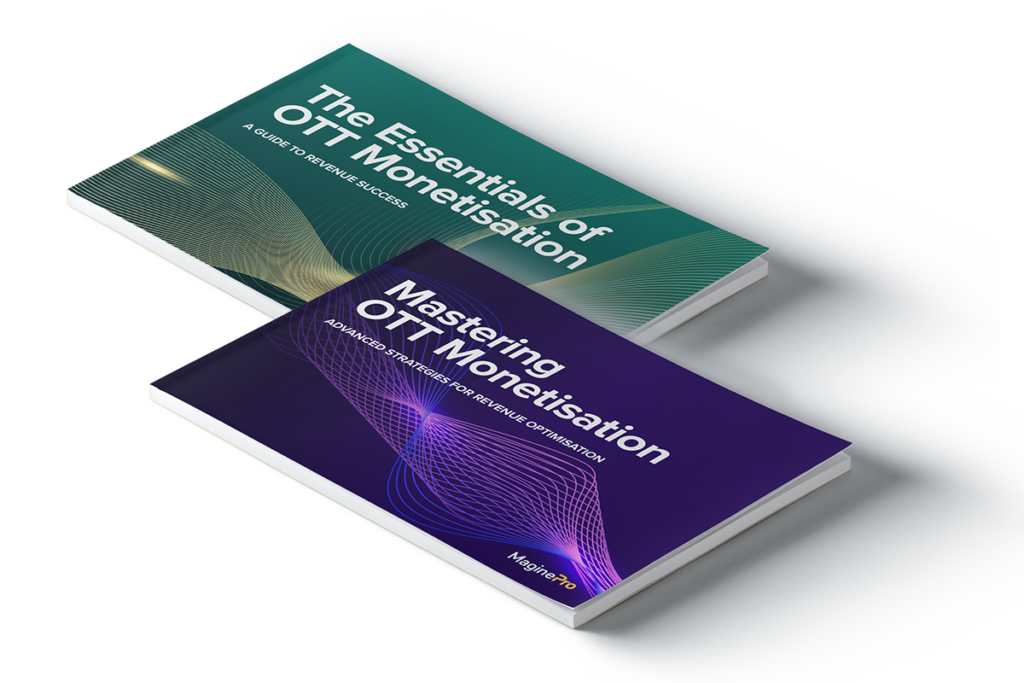Decoding the Pricing Puzzle: Navigating Streaming Platform Costs

Pricing models come in a variety of shapes and sizes which makes it tricky to compare OTT platform vendors.
- Fixed Per-User Pricing: A fixed fee is charged per subscriber or active user. Since the vendor is taking a risk, there is often a high premium in order to cover costs in the event that you have very high activity per user. It’s simple to understand but does not scale.
- Bucket Pricing: You pay a fixed fee each month that includes a certain amount of users or usage. It is predictable but you have to stay within the bucket in order for it to be worth it. If you grow, there could be high overage or you have to purchase another bucket that you likely will not fill. If you lose users, you will be paying for something you don’t need.
- Package Pricing: You like the price of the Basic Package but prefer the options in the Premium Package. Unfortunately, you can’t get the best of both worlds so you end up either disappointed by the Basic or perhaps over budget with the Premium.
- Tiered Usage Pricing: The most transparent and scalable option that we at Magine Pro prefer to use. You pay less on a per-unit level as you grow which increases your Gross Margin and lets you focus more of your capital on content and customer acquisition. The other benefit is that you only pay for what you use, as there are no minimum commitments or expensive overages.
Complexity in Comparing
While this diversity in pricing models aims to cater to the diverse needs of customers, it also contributes to the complexity of vendor comparisons. Several other factors also contribute to this complexity:
- Feature Parity vs. Value: Vendors may offer similar features but bundle them differently across pricing models, making direct feature comparisons challenging.
- Hidden Costs and Add-Ons: Additional fees for integrations, support, training, or customization can significantly impact the total cost of ownership but may not be immediately apparent.
- Scalability and Flexibility: Pricing models often lack transparency regarding how costs will scale as the business grows or usage increases, making long-term budgeting difficult.
- Contractual Terms: Variations in contract terms, such as billing frequency, renewal terms, and cancellation policies, further complicate comparisons.
Navigating the Pricing Maze
Despite the complexity inherent in SaaS pricing models, businesses can employ several strategies to navigate the maze and make informed decisions:
- Define Requirements Clearly: Start by clearly defining your requirements and prioritizing features that are critical for your business. This will help you evaluate vendors based on your specific needs.
- Request Detailed Quotes: Reach out to vendors for detailed quotes that outline all costs, including any potential add-ons or hidden fees. Ask for clarity on pricing tiers and scalability.
- Consider Total Cost of Ownership: Look beyond the sticker price and consider the total cost of ownership over time, including implementation, support, and possible increase in headcount.
Ask and Validate
While comparing SaaS vendors based on pricing models can be challenging, it all comes down to numbers in the end. If you have a forecast then Magine Pro can help you with a Business Model so you know exactly what your costs will be over time. We will gladly go through it in detail so you feel confident and comfortable as you embark on your streaming service journey with Magine Pro.
______________________________________________________________________________________
Interested in learning more about OTT business models? Our comprehensive e-guide has you covered with all the essentials. And if you’re eager to delve into strategies for maximising revenue through content monetisation, don’t miss our white paper, ‘The Profit Playbook: OTT Revenue Growth Tactics‘.
Book a meeting with a member of the team to discuss pricing models and monetisation in more detail.
Top 10 Transactional Monetisation Tips for OTT Platforms
As the streaming landscape continues to evolve, OTT providers are presented with a myriad of opportunities to capitalise on transactional models and boost revenue. In this blog, we delve into the art of maximising revenue with top transactional monetisation tips tailored specifically for OTT platforms. Whether you’re navigating the challenges of one-time purchases, rentals, or electronic sell-throughs (EST), these insights can guide you in optimising your monetisation approach, ensuring a seamless experience for both your service and your users.
- Diverse Content Selection: Offer a wide range of high-quality content to cater to diverse customer preferences. Regularly update and expand your content catalogue to encourage customers to return and remain engaged.
- Transparent Pricing: Clearly communicate the pricing for each transaction, including any additional fees, to build trust with customers. Avoid hidden charges or unexpected costs.
- User-Friendly Checkout: Streamline the checkout process to make it as frictionless as possible. Implement a straightforward payment system, and offer multiple payment options to accommodate various customer preferences.
- Recommendation and Personalisation: Leverage data analytics to understand user behaviour and preferences. Use this information to offer personalised recommendations and upsell complementary content.
- Promotions and Discounts: Implement occasional promotions, discounts, and bundling options to encourage more transactions and foster customer loyalty. Limited-time offers can create a sense of urgency.
- Mobile Optimisation: Ensure that your service is mobile-responsive, as many users consume content and make purchases on smartphones and tablets. A mobile-friendly interface can enhance the user experience.
- Secure Payment Processing: Invest in robust security measures for payment processing to protect customer data and gain their confidence.
- Customer Support: Provide responsive and effective customer support to address any issues or enquiries promptly. Satisfied customers are more likely to return and make future transactions.
- Feedback Loop: Continuously monitor customer behaviour and collect feedback to make data-driven decisions for improving your transactional model and user experience.
- Competitive Analysis: Stay informed about market trends and competitors to adjust your pricing and offerings accordingly.
By implementing these tips you can effectively optimise transactional monetisation models, enhance user satisfaction, and ultimately drive revenue growth. At Magine Pro, we support our customers who operate transactional-based services by enabling them to set transactional offers on movies and series, including rental and electronic sell-through (EST) simultaneously. These transactional offers can be seamlessly integrated with subscriptions, advertisements, and discount codes. We also endorse hybrid services that blend transactional and subscription models, allowing users to rent or acquire day passes for exclusive content or events.
To delve deeper into transactional monetisation models and strategies, download our latest FREE e-guide and white paper. The Essentials of OTT Monetisation: A Guide to Revenue Success explores the intricacies of subscription, transactional, and advertising models. Its companion white paper, The Profit Playbook: Proven OTT Revenue Growth Tactics is also available to download and dives even deeper into monetisation, sharing valuable insights into strategies that ensure churn reduction and long-term revenue maximisation.
If you’re interested in discussing monetisation models and the capabilities of Magine Pro’s advanced billing engine, connect with our experienced team. Additionally, visit our blog for more resources and explore our entire collection of white papers available for download. To stay in the loop, subscribe to the Magine Pro e-newsletter, for all our latest news, partnerships, and products, and to find out which industry events we’ll be attending next.
